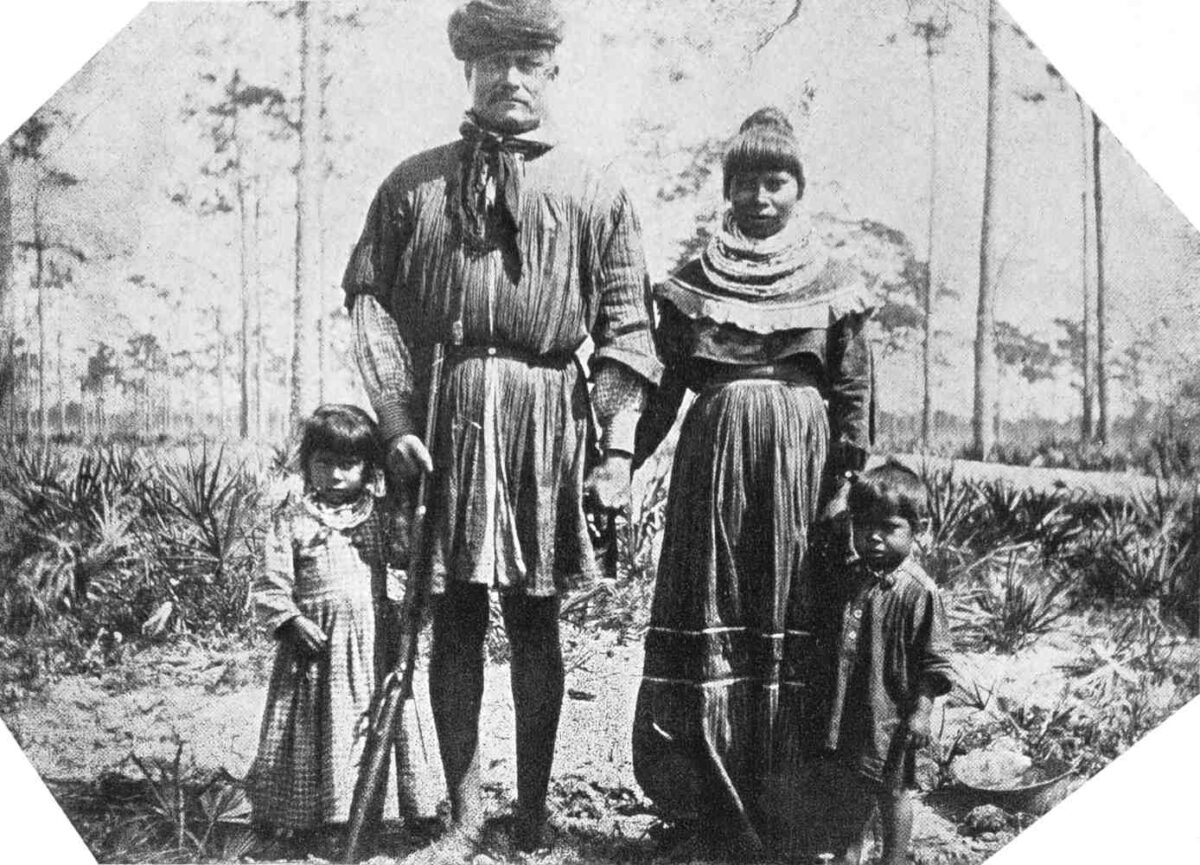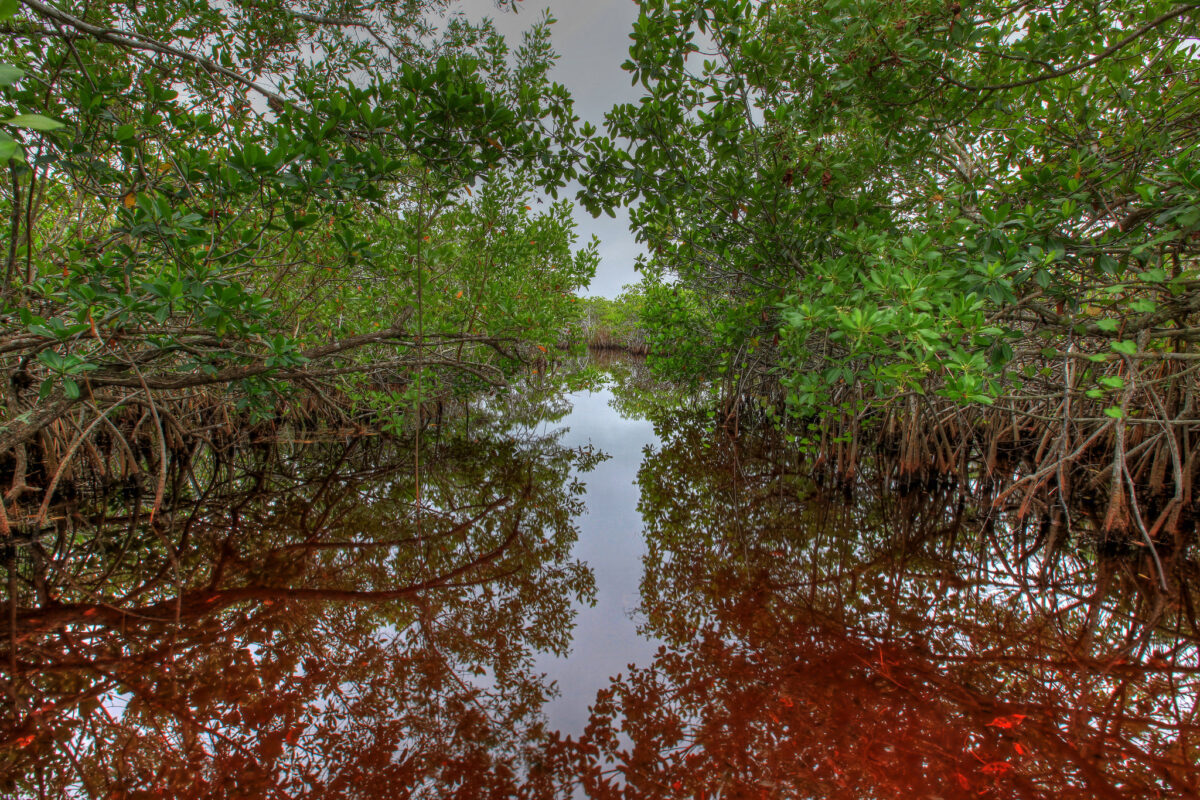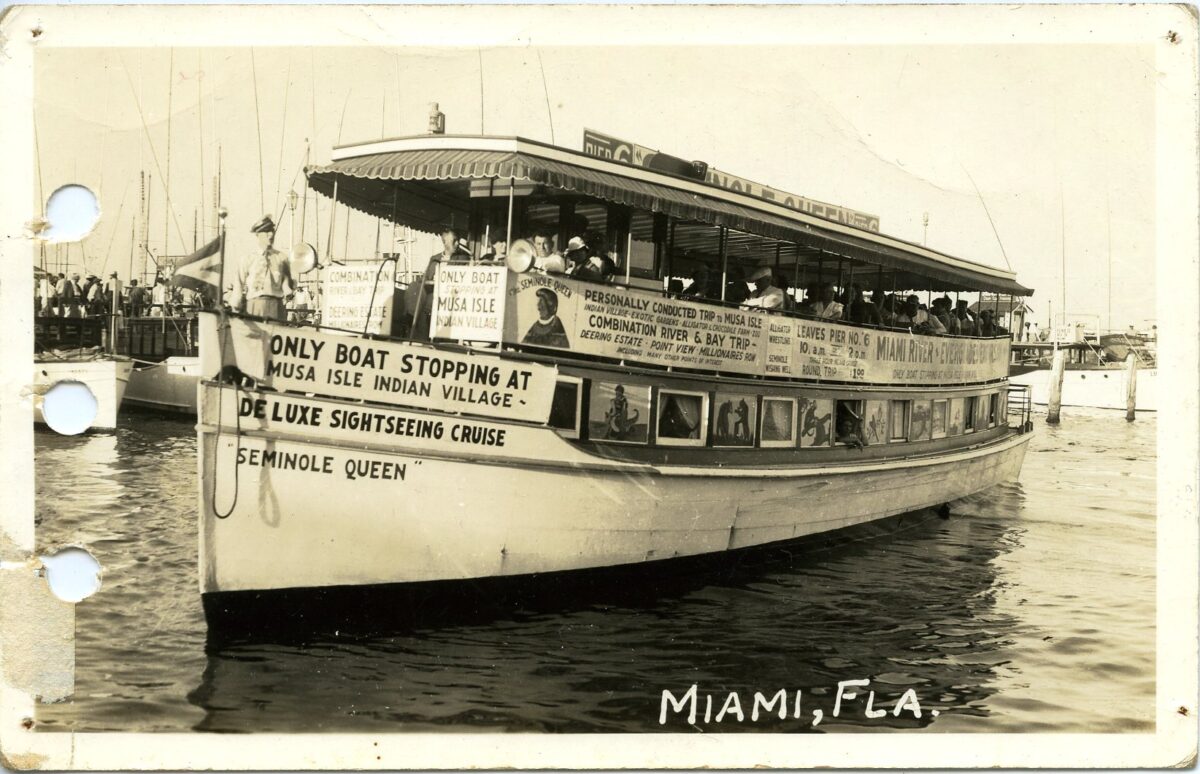
Early Florida Transportation leads the way for Tourism
From the railroad to automobiles, how we move from place to place has a big impact. Did you know that different kinds of transportation also helped change Florida’s early tourist economy? Prior to modern forms of transportation, moving around within Florida was incredibly difficult. Cypress swamps and the ebb and flow of the Everglades made moving across the state challenging. Often, travelers would move around Florida by boat. But, this took a lot of time and didn’t allow for much cross-state travel. So, how did Florida become the tourism powerhouse that it is today? This week, join us as we look at Florida transportation, and the impact it had on a fledgling tourist industry.
The Steamboat Era
Before railroads, the steamboat powered Florida. At the turn of the nineteenth century, most of Florida’s residents were isolated, except from their immediate neighbors. Travel from one place to another was limited to patchwork paths or Army trails by foot. Seminoles within the Everglades relied on dugout canoes to travel from camps and trading posts. For everyone, moving from place to place was dangerous, time consuming, and difficult. But, in the mid-1800s, steam powered boats began chugging along Florida’s largest rivers. The Second Seminole War played a significant role in developing steamboat activity in Florida. The US Army found the war difficult and costly to fight, and relied on steamboats to transport military troops and goods. Eventually, the potential was seen in the civilian sector. Soon, steamboats began to make regular trips up and down the St. Johns River.
The Steamboat Era reached its peak in the mid 1880s. Especially after the Civil War, passenger steamboats would transport new settlers and tourists across Florida. The steamboat lines on the St. Johns River made it one of Florida’s first tourist destinations. Advertisements in magazines would tout Central Florida hot springs, boat excursions, and hunting and fishing opportunities. But, steamboats didn’t only connect Florida to other places. They also began to connect places inside the Sunshine State. Travel between local towns and cities became easier, and goods, supplies, and passengers flowed along Florida’s waterways. Hotels, health spas, and more began to pop up along rivers. Soon, railroads and eventually automobiles would edge out steam powered riverboats. But, certain towns, especially between Tampa and Port Charlotte, relied on steamboats to bring mail, supplies, and news well into the 20th century.
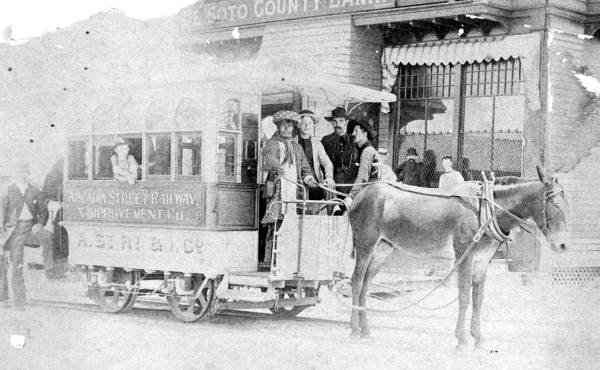
Billy Bowlegs III is holding the reins of the mule that powered the street car of Arcadia. 1889. Florida Memory Project.
Railroads through the Swamp
Railroads came to Florida around the same time as steamboat transportation began booming. Eventually, they would revolutionize the economy of Florida, allow for major commercial and residential development, cause a flourishing industry, and open the state wide for tourism. But, it would be a long road to get to that point. The first train to operate in Florida was the Lake Wimico line, which connected St. Joseph to the Apalachicola River in 1836.
Then, the Internal Improvement Act of 1855 gave railroad companies land in exchange for new lines and tracks. Railways also began to get more state support. Senator David L. Yulee became the president of the Florida Railroad, and ushered in more rail development. The Florida Railroad was completed in 1860, and connected Fernandina Beach to Cedar Key. Eventually, railroad developers began to link East and West Florida. But, the Civil War had a significant negative impact on the railroad’s development.
The Civil War
During the Civil War, skirmishes and sabotage plagued rail lines. In some cases, Florida’s Confederate government would take up rail lines to dissuade Union usage, or even seize existing rail lines and reuse them strictly for military use. It was only after the end of the Civil War that Florida railways could blossom to their full potential. Eventually, during the 1880-1890s, Henry Flagler would expand rail lines all the way from Jacksonville down the east coast to Miami, and eventually Key West.
Prior to the introduction of railways, Miami had only 300 people. That is a far cry from the metropolitan city of today! On the west coast, Henry Plant expanded the Plant System lines down from Tampa. Both Plant and Flagler also built hotels along the rail lines. These resort-like luxurious hotels were built to entice elite northern vacationers to stay the winter months. They represented a slice of the Gilded Age in Florida, juxtaposed with the recovering post-Civil War experience of other parts of the state.
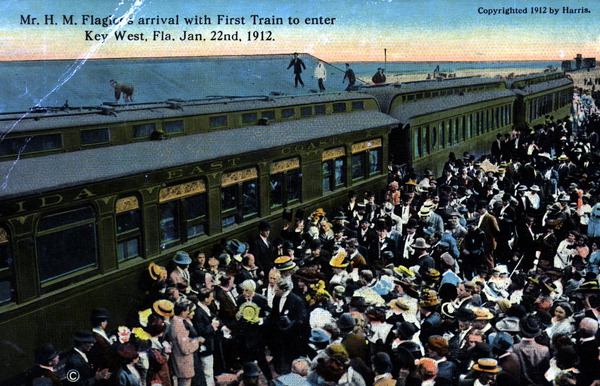
Mr. H.M. Flagler’s arrival with first train to enter Key West, Florida. 20th century. State Archives of Florida, Florida Memory.
Musa Isle and the Seminole Queen
With the railways opening up South Florida, people began to flock to Miami. Musa Isle tourist attraction opened on the Miami River in the early 1900s on a long-established fruit grove. The Indian Village at Musa Isle opened November 1st, 1921. Seminole Willie Willie ran it. Tourists to the village would watch coontie flour grinding, sewing, crafting, canoe carving, tanning, and alligator wrestling. Guides would take tourists down the Miami River in canoes. Like other Seminole camps that would begin to pop up on the Tamiami Trail, Musa Isle became an iconic part of early Florida tourism. Seminole crafts and postcards from Musa Isle would make their way around the world. Seminoles would access the village by dugout cypress canoes. But, the tourist’s main form of transportation to and from Musa Isle was by sightseeing boat, the Seminole Queen.
As Seminole tourism gained momentum in the 20s and 30s, riverboat tours became increasingly popular. In Fort Lauderdale on the New River, the Jungle Queen riverboat ferried travelers down the river to a Seminole village tourist camp starting in 1935. At Musa Isle, the Seminole Queen was an integral part of the tourist experience. It was the only boat to stop at the Seminole village on Musa Isle. Therefore, the success of the village itself relied on an enticing and unique boating experience. Advertised as a jungle cruise, brochures would talk up Musa Isles’ tropical gardens filled with palms, citrus, and banana. Nestled in with a fish pond and bird sanctuary, the village gave tourists a glimpse of Seminole life. To entice customers, Seminole women would sew patchwork at the Bayfront boat concessions next to the docking point. Musa Isle closed in 1964 after 40 years of operation.
Automobiles and Tin Can Tourism
These transportation innovations prepared Florida to be a tourism powerhouse. Railways connected the land, and steamboats the waterways. But, nothing could compare to the freedom and power of the automobile. Automobiles first came to the Sunshine State around 1900, with early registration records beginning in 1905. Prior to that point, there were no speed or legal regulations around automobiles in Florida. Soon, a bill was passed to require the registration of vehicles, as well as laws outlining speed and safety restrictions. In 1915, the Dixie Highway Association began the planning and construction of paved roadways. These roads would connect the interior of the state, from Miami all the way to the Northern Florida border. This, along with other auto trails like the Tamiami Trail, would be the final piece of the puzzle to make Florida a tourism capitol.
Before, vacationers were limited to the rich resort-goers of Flagler and Plant’s hotels. Now, a new kind of tourism gripped the United States. In the 1920s, “Tin Can Tourism” became popular. Ford’s Model T were affordable enough for almost any family, and people took to the open road with zest. They explored Florida in their cars, seeking out small towns and hidden highlights. Some travelers had modified sleeping areas inside, or camped alongside their automobiles for weeks at a time. As automobiles developed, people invested in camper trailers. People soon came to Florida in droves, winter camping in some of the most rural parts of the state. Although hindered by the Great Depression and WWII, Tin Can tourism would surge again in the 1950s and continue to feed the tourism industry of Florida for decades.
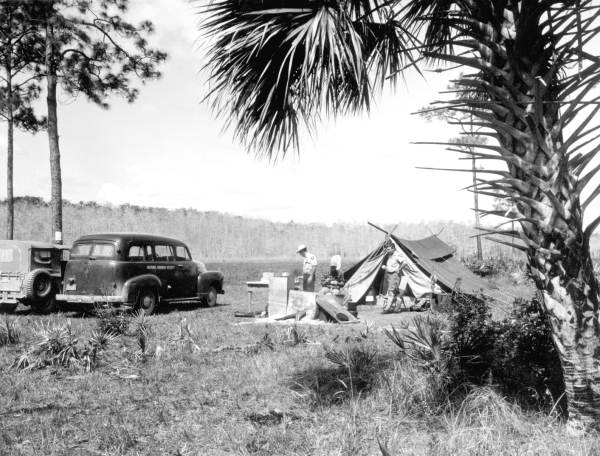
Campers in Corkscrew Swamp – Collier County, Florida. 20th century. State Archives of Florida, Florida Memory.
The Tamiami Trail
The Tamiami Trail is just one place Tin Can Tourism flourished in South Florida. The long stretch of road connecting Tampa to Miami, cutting across the Everglades, was an industry changing link for Florida transportation, and tourism. The grand opening of the Tamiami Trail was April 26th, 1928. The opening of the Trail allowed tourists to not only travel across the Everglades in a way they never had before, but also was its own sight to see. Camper-culture tin can tourists could see some of the most beautiful land South Florida had to offer through their own windshields. Even today, you can spot alligators, gorgeous flocks of birds, bears, and other wildlife along the Trail. Tree islands dot the landscape among the River of Grass, offering stunning views at your own pace.
Seminole and Miccosukee tourist camps began to pop up on Tamiami Trail as travelers became frequent. These camps became plentiful, and were a vital economic resource, as traditional ways of life became more difficult to sustain. The Everglades’ landscape changes required them to adapt, and these tourist camps became a prime example of that adaptation. Tourists could see exhibition shows like alligator wrestling and hunting displays, watch patchwork and doll crafters, and see scenes from Seminole camp life.
Early tourist camps like these, and Tom Tiger’s camp discussed last week, were incredibly important to Seminole people. Through them, Seminoles were tightly tied with the Florida tourism industry, a relationship which has continued through present times. Without these shifts in early Florida transportation, as well as Seminole tourist camps and innovation, Florida tourism would not be what it is today!


